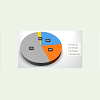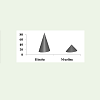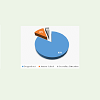Research Article
Shrimp Seed Collection in IndianSundarban Estuaries: A Threat to Overall Estuarine Ecosystem Services
Goutam Roy Chowdhury1, Nabonita Pal2, Sufia Zaman2, Abhisek Saha2 and Abhijit Mitra3*
1Chancellor, Techno India University, West Bengal, Salt Lake Campus, Kolkata 700091, India
2Department of Oceanography, Techno India University, West Bengal, Salt Lake Campus, Kolkata 700091, India
3Department of Marine Science, University of Calcutta, 35 B.C. Road, Kolkata 700019, India
Corresponding author: Abhijit Mitra, Department of Marine Science, University of Calcutta, 35 B.C. Road, Kolkata 700019,India, E-mail: abhijit_mitra@hotmail.com
Citation:Chowdhury GR, Pal N, Zaman S, Saha A, Mitra A. Shrimp Seed Collection in Indian Sundarban Estuaries: A Threat to Overall Estuarine Ecosystem Services. J Environ Soc Sci. 2017;4(1): 129.
Copyright © 2017 Chowdhury GR, et al. This is an open access article distributed under the Creative Commons Attribution License, which permits unrestricted use, distribution, and reproduction in any medium, provided the original work is properly cited.
Journal of Environmental and Social Sciences | Volume: 4, Issue: 1
Submission:29/03/2017; Accepted: 02/05/2017; Published: 09/05/2017
Abstract
We conducted a thorough and in-depth study during 2016 on the impact of tiger prawn seed collection on socio-economic and biodiversity profiles of Indian Sundarbans considering Patharpratima as a model site. Our first order analysis reflects an adverse impact of this profession on both these sectors and calls urgently for developing few alternative livelihood programmes for the tiger prawn seed collectors of Indian Sundarbans. A separate section of Indian Sundarbans needs to be considered while formulating the ICZM (Integrated Coastal Zone Management) programme for the maritime state of West Bengal (India).
Introduction
The ecosystem services of estuaries are wide and intricately related to the livelihood of the surrounding population. These services include production of fishes, molluscs, crabs for commercial/economic gain of the local people, navigational channel for transportation of local people, fishing vessels and trawlers, passenger vessels, cargo ship etc., regulatory services like flood control, bioremediation, tidal action etc.
The flow of water along the estuaries is hindered by thousands of nets that are laid along the stretch for trapping seeds of tiger prawn (Penaeus monodon). This profession is extremely detrimental to the ecosystem services [1]. The Government of West Bengal has already banned the wild fry collection. Lack of alternative livelihoods for prawn seed collectors is one of the principle constraints on implementing any policies, laws and/or regulations geared towards the development of a sustainable resources use strategy as well as conservation effort for the wise use of the marine, coastal and estuarine resources [2]. For this, the Government placed the enforcement of the fry collection ban into abeyance (in many developing countries) pending further review of how the resource and biodiversity could be conserved at the same time as protecting the livelihoods of 300,000 fry collectors [3].
On this background, the present paper attempts to capture an indepth view of the effects of prawn seed collection on the stakeholders and ecosystem services of Indian Sundarban estuaries.
Materials and Methods
Research site
Sundarban delta were formed by the deposited sediments from three major rivers i.e, the Ganga, Brahmaputra, and Meghan and their dense network of smaller rivers, channels. The maximum elevation is about 10 meter above the mean sea level. The Hooghly River demarcates the western limit of Indian Sundarbans and the eastern boundary is the Raimangal River.
We undertook this study during March to July, 2016 in and around the Patharpratima block of Indian Sundarbans region, which is situated in the south eastern part of Kakdwip subdivision. It covers 484.50 sq km.
Data capture
A questionnaire was developed to collect data on socio-economic condition, livelihood status and alternative ways of livelihood during the season of fry collection from the study site and its adjacent rivers. Primary data on fry collector’s activities were collected both by physical observation and interviewing with fry collectors. Secondary data and information related to the study was collected from several publications on Indian Sundarbans [1,4-9].
Results
Impact on Socio economic status of prawn seed collectors
Population: This study was conducted at Patharpratima block and 210 peoples were interviewed. Total family members were 1423, which means their average family size was about 7 persons per family. Out of 1423 people, 721 were male and 702 were female (Figure 1).This means that ratio of male and female was 1.03:1.
Age structure: About 23% of the prawn seed collectors were children whose age ranged between 10-14 years. About 20.0% were in the age between 15-20 years. 53% were in the age group of 21-50 years and 4.0% were aging above 50 years (Figure 2).
Sex ratio: Our team made an in-depth survey in the study area and documented that 71% of the prawn seed collectors were male and 29% were female. However, in many places like Kakdwip, Lot 8, Sagar South, the profession in dominated by females (Figure 3).
Religion: Both Muslim and Hindu are engaged in this profession without any conflicts. Rarely tribal communities (Bhumij, Garo, Kharria, Kol, Santhal, Oraon, Lodha-savar, Munda, Kora, Mahilis, Malpaharias) participate in this profession.
Out of 1423 people, 1053 were Hindu and 370 were Muslim which means 74% and 26% of the respondents in the study site were Hindu and Muslim respectively (Figure 4). It is interesting to notethat people of both these religions worship Bonobibi, which may be one of the reasons for religious convergence without any conflicts.
Education: The data captured by our team members revealed that 83% of the children (within the age group 10-14 years) dropped out their schools in order to get ready cash. Among the remaining 17%, 12.2% passed class VIII (Junior school) and the remaining 4.8%passed class X (Secondary education) (Figure 5).
Impact on biodiversity spectrum
Fish juvenile loss: Due to screening of estuarine water with nets of fine mesh size, many commercially important high valued fish juveniles are also caught in the nets, but they are simply thrown away and destroyed. We observed that an average of 313 juveniles of 37 species of finfish was destroyed only for 17 tiger prawn seeds.
Uprooting of mangrove seedlings: The dragging of nets by the fry catchers along the intertidal mudflats often uproots the mangrove seedlings and salt marsh grass (Porteresia coarctata), which otherwise may generate several ecosystem services like control of erosion, beach stabilization, bioremediation, carbon sequestration etc.
Discussion
Tiger prawn seed collection is a common profession, which is detrimental to the socio-economic and biodiversity profiles of Indian Sundarbans. Apart from destruction of finfish and shell fish juveniles, the practice of dragging the nets along the shore uproots the mangrove seedlings [1]. These seedlings not only control soil erosion, but also act as a major sink of carbon dioxide [10-15]. This practice is therefore a serious threat to ecosystem services of Sundarban estuaries [7-9]. Because of recession in traditional livelihood like agriculture(due to expansion of shrimp culture activities) and lack of alternative livelihood schemes at commercial scale, people of Sundarbans are accelerating their dependency on prawn seed collection. Considering the negative impact of this profession it is of utmost importance to procure prawn seeds from hatcheries (available in plenty from the adjacent states like Odisha and Andhra Pradesh), develop seed bank and provide alternative livelihoods through ICZM (Integrated Coastal Zone Management) programme as a separate section for this mangrove dominated World Heritage Site.
Conclusion
Because of salinity problem, development of tiger prawn seed hatchery could not see the light of success in and around Indian Sundarbans due to which the profession of wild collection of prawn seed has sprouted. Considering the adverse impact of this occupation on economic profile, health of the fry collectors and fish biodiversity, it is important to provide an alternative livelihood for the fry catchers. In this context Techno India University, West Bengal has planned to develop seed bank in and around Jharkhali region to reduce the pressure on this fragile ecosystem as a whole.
Acknowledgements
This research is a part of GRC Vision 2025 programme, which is the brain child of Chancellor, TIU to eradicate poverty, over population and pollution initially at local scale and then at regional and global scales. The road map for this programme includes the promotion of Seed bank development, Pisciculture, Hydroponics, Zero Emission transportation and low cost fly ash based structures and propagating the same through special Franchise Model developed by Prof. Sujoy Biswas, CEO of TIU, and West Bengal.
References
- Roy Chowdhury G, Mitra A (2017) Traditional halophytic medicine: A new era in the health care canvas. Org Med Chem Int J 2.
- Ahmed F, Hossain MY, Fulanda B, Ahmed ZF, Ohtomi J (2012) Indiscriminate exploitation of wild prawn post larvae in the coastal region of Bangladesh: A threat to the fisheries resources, community livelihoods and biodiversity. Ocean and coastal management 66: 56-62.
- Williams D (2002) Management options for the shrimp fry fishery Regional stakeholder workshop in Khulna, Bangladesh, 8.
- Mitra A, Choudhury A, Zamaddar YA (1992) Effects of heavy metals on benthic molluscan communities in Hooghly estuary. Proc Zool Soc 45: 481-496.
- Mitra A (1998) Status of coastal pollution in West Bengal with special reference to heavy metals. J Indian Ocean Stud 5: 135-138.
- Mitra A (2013) Climate change: A threat of the era In: Sensitivity of mangrove ecosystem to changing climate. Springer pp. 1-322.
- Mitra A, Zaman S (2014) Carbon sequestration by coastal floral community: A ground zero observation on blue carbon. Energy Resour Inst (TERI) Press, India, pp. 1-411.
- Mitra A, Zaman S (2015) The blue zone of the planet Earth In: Blue carbon reservoir of the blue planet. Springer, pp. 1-299.
- Mitra A, Zaman S (2016) Marine overview: An ecosystem In: Basics of marine and estuarine ecology. Springer, pp. 1-479.
- Agarwal S, Zaman S, Biswas S, Pal N, Pramanick P et al. (2016) Spatial variation of mangrove seedling carbon with respect to salinity: A case study with Bruguiera gymnorrhiza seedling. Int J Adv Res Biol Sci 3: 7-12.
- Mitra A, Saha A, Pal N, Fazli P, Zaman S (2016a) Allometry in S. apetala seedlings of Indian Sundarbans. Int J Recent Adv Multidisciplinary Res 3: 1903-1909.
- Mitra A, Pal N, Chakraborty A, Mitra A, Saha A, et al. (2016b) Estimation of stored carbon in Sonneratia apetala seedlings collected from Indian Sundarbans. Indian J Geomarine Sci 45: 1598-1602.
- Pal N, A. Gahul, Zaman S, Biswas P, Mitra A (2016) Spatial variation of stored carbon in Avicennia alba seedlings of Indian Sundarbans. Int J Trend Res Dev 3: 100-103.
- Zaman S, Biswas S, Pal N, Datta U, Biswas P et al. (2016) Ecosystem service of Heritiera fomes seedlings in terms of carbon storage. Int J Trend Res Dev 3 183-185.
- Mitra A, Sundaresan J, Banerjee k, Agarwal SK (2017) In: Environmental coastguards. Published by CSIR-National Institute of Science Communication and Information Resources (CSIR-NISCAIR), ISBN 978-81-7236-352-9.





